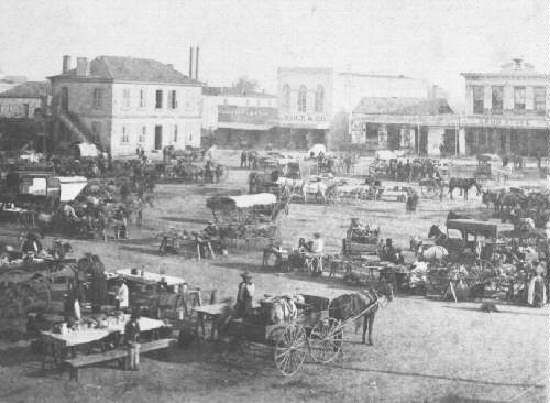
of southwestern Europe, the use of the fruit of the capsicum; green, ripe and in the powdered form, plays no inconsiderable part. It is employed in the manufacture of sauces and relishes, and in pickling and preserving food products, such as anchovies, sardines, etc., for exportation. It is frequently used in combination with the tomato, or in the absence of the latter, becomes a substitute; as is the case, in the preparation, by the Italians, of their famous macaroni—they being especially partial to these two wholesome representatives of the vegetable kingdom. In France, where the use of condiments and sauces is so thoroughly understood, it would doubtless be idle to question the favorable estimation in which “Piment Rouge” is held. The wealthy French Louisianian of ante-bellum days, sought Paris as the great source from which radiated the realization of all his dreams of higher civilization and luxury. Within its vaunted precincts, were to be found the models which governed the formation and growth of his ideas, opinions and tastes, and thither he turned to enjoy the delights of scholarship, of fashion and of the “sublime pate.” His children were educated by French tutors and his cooks trained in French methods. The creole cooks, imbued with principles of French thrift, and adroit as their teachers, quickly discovered the intrinsical value of small essentials to proper food-seasoning, and to the judicious employment of these they have become indebted, in no small degree, for acknowledged proficiency in the attainment of most gratifying results. They merit the compliments constantly paid their professional skill; and are certainly adepts in the art of furnishing, at comparatively small cost, repasts of the most epicurean and varied character. They are very careful in their choice of the grudements, as a dame of dusky hue always called the herbs and condiments, in the collection and use of which, as they assisted her to score many a culinary triumph, she proudly delighted.
Among these treasures of the cuisine, “Piment Rouge” or Chili Colorado occupies a favored position. Rich or poor, the New Orleans creole replenishes his supply as often as it is exhausted. It enters into the composition of his soups and sauces, and is indispensable in cooking his oysters and fish; notably so, in the preparation of court bouillon, a dainty generally relished by luxurious tastes.
 Under its French name, and in the French quarter of the city, there is little difficulty in obtaining Chili Colorado, for it glows in ruddy beauty, from its shining receptacles, on the shelves of every well-appointed grocery; but above Canal street, it is not so commonly demanded, and is known as Chili pepper.
Under its French name, and in the French quarter of the city, there is little difficulty in obtaining Chili Colorado, for it glows in ruddy beauty, from its shining receptacles, on the shelves of every well-appointed grocery; but above Canal street, it is not so commonly demanded, and is known as Chili pepper.
In South Louisiana, the kitchen rafters are frequently hung with red peppers, drying or dried for winter consumption, for the people are fond of the capsicum in all its varieties. It is a little singular that they have not identified in its pretty commercial guise the tribute of Spain and Mexico, known here as ” Chili Colorado ” with the familiar sweet or Bell pepper; to which, in its green state, they are exceedingly partial, and which has, therefore, become a special feature in the market gardens of the lower parishes. In refreshing contrast to the ever present radish, its crisp pods, cool and green, glisten dewily upon their tables, and are eaten without other accompaniment than a little salt. Or they are sliced, and with or without cucumbers, tomatoes, or onions, are dressed as a salad, with a dash of oil and vinegar. They are also thought to make a fine pickle. They are often seeded, and filled with shredded meats or fish, mixed with rice, bread crumbs, etc., and baked before serving.
Bell peppers are in constant demand, and bring a fair average price in the markets, and if once recognized as identical with the fruit from which the imported chili is derived, they could be made to play a still more important part in the annals of domestic agriculture. That the two are identical is more generally suspected than positively known, but such identity has been conceded by very creditable authority. Ordinary enterprise, upon the establishment of this fact, would seem to urge upon the attention of our people the home production of an article, which necessarily, as it meets a constant and growing requisition, yields a profitable revenue to the cultivator, the importer and the merchant.
From: Table Talk, Volume 6, January-December, 1891. Table Talk Publishing Company, Philadelphia, Pa.
0 Reviews
1891









